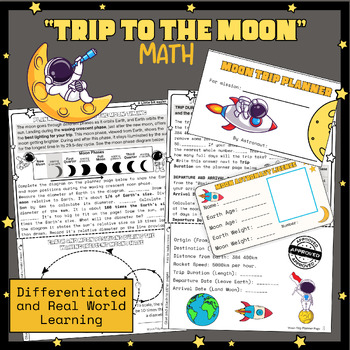Moon Math, Project based learning, Science, Moon phases, Earth, sun moon system
- Zip
Description
This pack contains resources needed to undertake a differentiated “Trip to the Moon” Math project with grade 4, 5 and 6 students. Students use math skills to answer questions and complete their astronaut licenses and moon trip planners.
It serves as more than a thematic activity and requires students to use math skills to learn about the solar system. Students work individually or in groups on differentiated (3 different versions included) math planning black line masters. The tasks are as follows and are linked to their relevant math concept:
*Age - operations
*Weight - mass and operations
*Trip Length, Departure Times and Arrival Times - operations and time
*Moon Phases - time, operations, scaling
*Apollo Moon Landings - cooridnates
*Astronaut License (color and black and white options)
*Moon Trip Planner (color and black and white options)
There are links to American, English and Australian curriculum documents.
This resource includes an American English version (miles, pounds, inches) in letter paper size and UK English in A4 size (km, kg).





